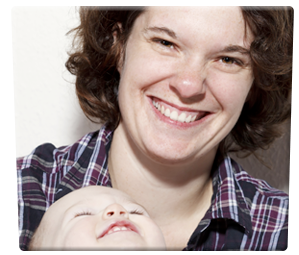The truth about the leading edge of Neurofeedback – NF 3 and 4
One of the questions we are asked quite often is do we offer NF1 or NF2 – our answer is neither – we offer what we call NF 3 and 4. Neurofeedback 3 was developed by EEG Info, who are unique in that they supply equipment, training, AND have an active clinical practice under one roof. This has enabled them to experiment with approaches that go beyond the traditional concepts of Neurofeedback discovered by accident 50 years ago and still used by NF 0 to 2. NF 3 gives us the capability to train at Infra Low Frequencies, where we are training the core control networks of the nervous system, using the nervous systems’ inherent ability to self-regulate to maximise performance. With NF3 we don’t ‘tell’ the brain how to change based upon 20 year-old databases as with NF2, we use the much more powerful approach of using the brains’ own ability to learn through neuroplasticity. Some of the key differences between Infra-Low Frequency Neurofeedback and QEEG-Guided Neurofeedback:
| ‘NF2’ | ‘NF3’ | |
|---|---|---|
| QEEG-Guided NF | Infra-Low Frequency NF | |
| Focus | Brainwave averaging | Symptom improvement and performance maximisation |
| Objective | Average brain performance | Maximum brain performance |
| Mechanism | Operant Conditioning discovered 50 years ago – tell the brain how it should change to become ‘average’ | Endogenous Neuromodulation first available in 2012 – give the brain information to enable the brain’s natural ability to self-regulate and change itself through neuroplasticity |
| Reference database | 20 years old | Not applicable – assumes that every brain is unique |
| Reward frequencies | Traditional frequency bands Alpha, Beta, Gamma, Delta, Theta | Infra-Low Frequencies, the core control networks of the nervous system |
The questions you need to ask yourself when making a decision about which approach to Neurofeedback is best for you are:-
- Do I want to be average OR the best I can be ?
- What do I really care about ? Making my brain waves average ? OR maximising performance and relief from symptoms ?
- Would I rather use a computer database to ‘tell’ my brain how to change OR use my brain’s natural ability to self-regulate to change itself through neuroplasticity ?
- Do I want my brain to be the ‘average’ as measured 20 years ago OR do I believe modern-day challenges require a new type of brain ?
- Often children with learning difficulties have specific talents that are far from average – do you want your children to be average or to make the most of their talents ?
- What would a QEEG-based approach make of the brains of Richard Branson, Albert Einstein, Steve Jobs or Bill Gates ? Would they be average or would the QEEG suggest their brains were ‘abnormal’ ?
The questions you need to ask Neurofeedback practitioners when making a decision about which approach to Neurofeedback is best for you are:-
- How does your approach compare with Infra-Low Frequency Neurofeedback ?
- Do you have evidence for any specific claims that your approach is better than others ?
NF4 builds upon NF3 and is unique to BrainTrainUT. We don’t use this in all cases as it is not necessary, but if for example a client presents with a history of brain injury we would recommend it. In cases of brain injury, which could be a knock on the head that resulted in mild concussion but impacted brain function, we can see more specifically the area where brain function is impaired, and use this Brain Map to give us more specific information on placements, which allows us to more effectively target training to remediate damaged brain functions with the Infra-Low Frequency training of NF3. We use $20,000 worth of BrainMaster equipment (NF2) to conduct a ‘Brain Map’. Brain Maps cost an additional £249 to £349 (depending on location), including written report and telephone de-brief.
What’s different about Infra-Low Frequency (ILF) Neurofeedback ?
Leading-edge research in the world of Neurofeedback is investigating the possibility of using functional magnetic resonance imaging (fMRI) to provide real-time feedback. The exciting thing about fMRI research is that by presenting live images of their own brain activity to participants and challenging them to change the activity level in certain brain regions, they can restructure brain patterns in a single session. fMRI Neurofeedback is so powerful because it is working on the primary regulatory networks or resting-state networks, the core control networks of the nervous system. However, the practical application of fMRI-based neurofeedback is handicapped by the fact fMRI scanners cost £millions and weigh tons. But thanks to the work done with fMRI neurofeedback and the identification of the resting-state networks in the EEG, this same mechanism is now available through EEG neurofeedback, in the form of Infra-Low Frequency (ILF) Neurofeedback. ILF is the latest generation of Neurofeedback and takes the capability of Neurofeedback beyond the so-called ‘deep-brain training’ of LORETA (NF2). The term ‘Infra-Low’ comes from the fact that the frequencies being rewarded are below 0.1Hz, well below the traditional Neurofeedback reward frequencies. Before these frequencies were identified through fMRI experiments they were not identified in the EEG, and are ignored by most modern forms of Neurofeedback (NF0-2) Only available commercially since 2012, ILF is a modality of neurofeedback in the category of ‘endogenous neuromodulation’, which means that any changes are solely due to information being provided to the brain on its own state. In other words, the training doesn’t encourage the brain to shift itself in any particular direction, it just gives information back to the brain, an analogy is showing the brain itself in a ‘mirror’ often for the first time. ILF Neurofeedback reaches deep into the hierarchy of nervous system regulation, providing feedback on the brain’s primary regulatory networks or resting state-networks, the core control networks of the nervous system. Initially the brain recognises its connection with the feedback signal, and then the signal becomes the object of control by the brain. A feedback loop has been established that allows the brain to enhance its own capacity for self-regulation. The brain’s natural development depends on similar feedback loops being established within the brain. ILF Neurofeedback gives the brain more information, more directly, accelerating the learning process. By targeting we can focus on particular functions or competencies we would like to improve.



